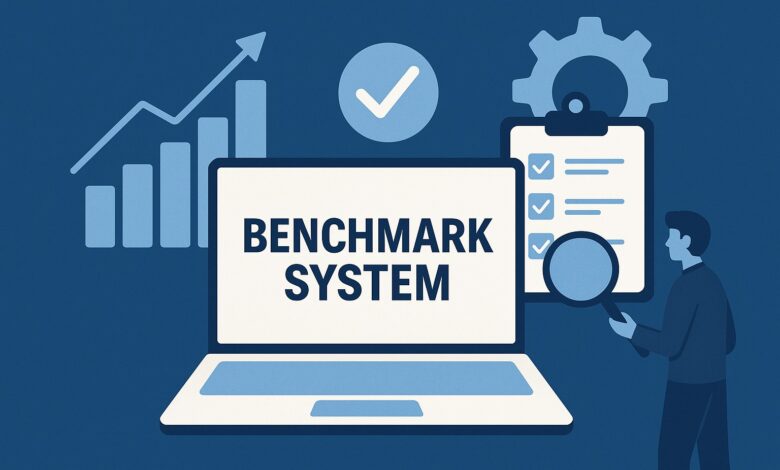How a Benchmark System Helps You Measure and Improve Efficiency

Introduction: Measuring What Matters
In today’s data-driven business environment, efficiency isn’t just about working faster—it’s about working smarter. Companies that thrive are those that can accurately measure their performance, identify areas for improvement, and implement strategic actions based on reliable insights. A 跑分系统 plays a central role in achieving this.
A Benchmark System provides the structure and tools needed to evaluate efficiency across all aspects of business operations. It allows organizations to measure how well they perform against internal goals and industry standards, leading to data-backed decisions and continuous improvement.
What Is a Benchmark System?
A Benchmark System is a framework used to analyze, compare, and enhance performance. It gathers data from internal and external sources, measures productivity and quality levels, and identifies performance gaps.
In essence, a Benchmark System answers critical questions like:
- How does your current performance compare to industry leaders?
- Where can you cut costs or time without sacrificing quality?
- Which processes deliver the highest return on investment?
By having these answers, businesses can build strategies grounded in evidence rather than assumptions.
Why Efficiency Measurement Is Essential
Efficiency reflects how well resources—time, money, people, and technology—are used to achieve results. Without proper measurement, inefficiencies often go unnoticed. A Benchmark System ensures that every process is tracked and optimized.
Key Benefits of Measuring Efficiency:
- Objective Evaluation – Provides an unbiased look at performance metrics.
- Goal Alignment – Ensures all departments work toward common objectives.
- Resource Optimization – Identifies areas where time and money can be saved.
- Improved Accountability – Creates transparent performance expectations.
With these metrics in place, a Benchmark System serves as both a mirror and a map—it reflects your current state and guides your path to improvement.
The Role of a Benchmark System in Measuring Efficiency
Efficiency measurement is not just about collecting data—it’s about analyzing patterns and converting numbers into actionable insights. A Benchmark System makes this possible through several key features:
- Real-Time Data Monitoring
Modern Benchmark Systems integrate with ERP, CRM, and production software to collect performance data automatically. Managers can monitor KPIs in real time, identifying inefficiencies the moment they arise.
- Standardized Metrics
Benchmarking establishes universal measurement standards. Whether you’re comparing employee productivity or machine uptime, the Benchmark System ensures consistent and fair evaluation.
- Historical Analysis
By tracking performance over time, businesses can identify trends and forecast future outcomes. A Benchmark System makes it easy to see whether efficiency initiatives are working or need adjustment.
- Predictive Insights
AI-driven Benchmark Systems can predict when processes will slow down or where bottlenecks will occur, allowing proactive optimization.
How a Benchmark System Identifies Inefficiencies
Every business faces hidden inefficiencies—redundant steps, manual bottlenecks, underutilized staff, or outdated equipment. The Benchmark System identifies these weak points by comparing performance data to best practices.
For example:
- If your production line’s cycle time is 20% longer than the industry average, the Benchmark System highlights it as an improvement area.
- If one department consistently outperforms another using similar resources, the system flags this imbalance for deeper review.
By revealing the “why” behind inefficiencies, a Benchmark System transforms data into insight and insight into action.
Improving Efficiency Through Benchmark System Implementation
A Benchmark System does more than diagnose problems—it provides a roadmap for improvement.
Step 1: Establish Key Performance Indicators (KPIs)
Identify measurable elements such as output per employee, cost per transaction, or energy usage per unit produced.
Step 2: Collect Data Across All Units
Integrate your Benchmark System with various departments for a unified view of operations.
Step 3: Compare and Analyze
Use the system to benchmark internal data against external standards.
Step 4: Identify Improvement Opportunities
Spot inefficiencies and prioritize the ones that have the most significant impact on cost and performance.
Step 5: Implement and Monitor Changes
Apply targeted changes and continue tracking progress through your Benchmark System dashboard.
This cycle of measurement, comparison, and improvement drives continuous growth.
Benchmark System Tools That Drive Efficiency
Modern Benchmark Systems combine multiple technologies to enhance performance monitoring:
- AI and Machine Learning – Predict future performance and detect hidden inefficiencies.
- Cloud Integration – Centralizes data for global access and scalability.
- Automated Reporting – Eliminates manual report generation, saving time.
- Data Visualization Dashboards – Turns complex data into easy-to-understand visuals.
With these tools, the Benchmark System becomes an intelligent advisor—always analyzing and recommending smarter ways to work.
Real-World Example: Benchmark System in Manufacturing
A mid-sized manufacturing company implemented a Benchmark System to measure energy efficiency across production lines. The results were immediate:
- Identified machines with 25% higher energy consumption.
- Reduced production downtime by 18%.
- Increased throughput by 22% in the first quarter.
By using the Benchmark System to monitor output per kilowatt-hour and production time per batch, the company optimized performance without major investments.
Benchmark System in Service Industries
In service sectors like banking, healthcare, and customer support, efficiency often depends on process flow and employee performance.
A Benchmark System can:
- Measure average response time per customer query.
- Identify workflow bottlenecks.
- Recommend automation in repetitive administrative tasks.
For instance, a financial institution using a Benchmark System discovered that loan approval times were twice the industry average. By automating data verification and document tracking, the bank reduced processing time by 40%.
How a Benchmark System Encourages Continuous Improvement
A key strength of the Benchmark System is its cyclical design. Benchmarking is not a one-time event—it’s an ongoing process that continuously refines operations.
Each evaluation builds upon previous results, creating a feedback loop that helps businesses adapt quickly to changing conditions.
Over time, the Benchmark System evolves from a measurement tool into a growth engine, promoting innovation and long-term competitiveness.
Common Efficiency Metrics Tracked by Benchmark Systems
To measure efficiency accurately, a Benchmark System tracks key indicators such as:
- Output per Hour – Measures workforce productivity.
- Cost per Unit – Evaluates production or service cost-effectiveness.
- Cycle Time – Determines how long a process takes from start to finish.
- Resource Utilization Rate – Tracks how effectively assets are used.
- Customer Response Time – Reflects service efficiency.
These metrics reveal where your business stands today—and how far it can go tomorrow.
Overcoming Challenges with Benchmark Systems
Despite the clear benefits, implementing a Benchmark System comes with obstacles such as:
- Data Integration Complexity – Combining multiple systems can be challenging.
- Cultural Resistance – Employees may fear performance evaluation.
- Budget Constraints – Advanced systems require initial investment.
However, the long-term ROI far outweighs these hurdles. When teams understand that the Benchmark System exists to help them, not judge them, adoption rates soar.
The Link Between Benchmark Systems and Business Growth
Efficiency directly impacts profitability. A company that produces more with fewer resources gains a competitive edge.
By standardizing performance evaluation and promoting transparency, a Benchmark System ensures growth is both measurable and sustainable.
Whether it’s boosting sales, improving logistics, or enhancing customer experience, the Benchmark System acts as a compass guiding businesses toward continuous progress.
Future of Benchmark Systems in Efficiency Management
The future of benchmarking lies in AI-powered automation, real-time analytics, and cloud scalability. Businesses will soon rely on autonomous Benchmark Systems that not only detect inefficiencies but also take corrective actions instantly.
Imagine a Benchmark System that adjusts production speeds, reallocates resources, or even triggers maintenance alerts automatically—this is the next evolution of business efficiency.
Conclusion
Efficiency is the heartbeat of every successful organization. Without measuring it, improvement becomes guesswork. A 跑分系统 removes uncertainty and replaces it with precision.
It doesn’t just show you how you perform—it shows you how to perform better.
From manufacturing floors to digital platforms, from financial operations to customer service desks, a Benchmark System empowers businesses to reach peak efficiency and redefine success in a competitive world.





